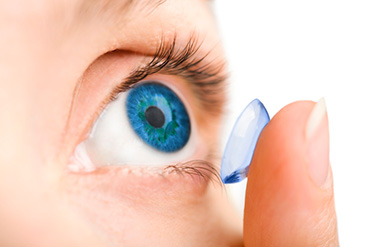

Contact Lens Types
There are two general types of contact lenses: hard and soft. The hard lenses most commonly used today are rigid, gas-permeable lenses (RGP for short). They are made of plastics and other materials such as silicone or fluoropolymers. Hard lenses hold their shape, yet allow the free flow of oxygen through the lenses to the cornea. RGP lenses may be the best choice when the cornea has enough astigmatism (is shaped like an egg instead of an orange) that a soft lens will not provide sharp vision. They may also be preferable when a person has allergies or tends to form protein deposits on his or her contacts.
Soft lenses are the choice of most contact lens wearers. These lenses are comfortable and come in many versions, depending on how you want to wear them.
Daily-wear lenses are the least expensive, are removed nightly and are replaced on an individualized schedule. They should not be used as an extended-wear lens.
Extended-wear lenses are worn overnight but are removed at least weekly for thorough cleaning and disinfection. They are being recommended less frequently, since there is a greater risk of corneal infection with any overnight wear of contact lenses.
Disposable-wear lenses are more expensive, but convenient. They are removed nightly and replaced on a daily, weekly, biweekly, or monthly basis. Disposable lenses are sometimes recommended for people with allergies and for those who tend to form deposits on their lenses.
Colored contact lenses are contacts that change your eye color, the appearance of your eye, or both. And in the case of circle lenses they can also make your iris appear bigger. Colored lenses are available by prescription and should only be worn after an eye exam and fitting by a qualified eye care professional. Over-the-counter colored contacts, including circle lenses, are illegal and pose a serious danger to your eye health. They can cause eye injury, eye infection, and vision loss.
Toric soft contact lenses can correct astigmatism, but sometimes not as well as RGP lenses do. They usually cost more than other contact lenses.
Bifocal or multifocal contact lenses are available in both soft and RPG varieties. They can correct nearsightedness, farsightedness and astigmatism in combination with presbyopia. Cleaning and disinfection are specific to the lens material. Visual quality is often not as good as with single vision lenses; however, for some people the ability to correct presbyopia is worth it.
